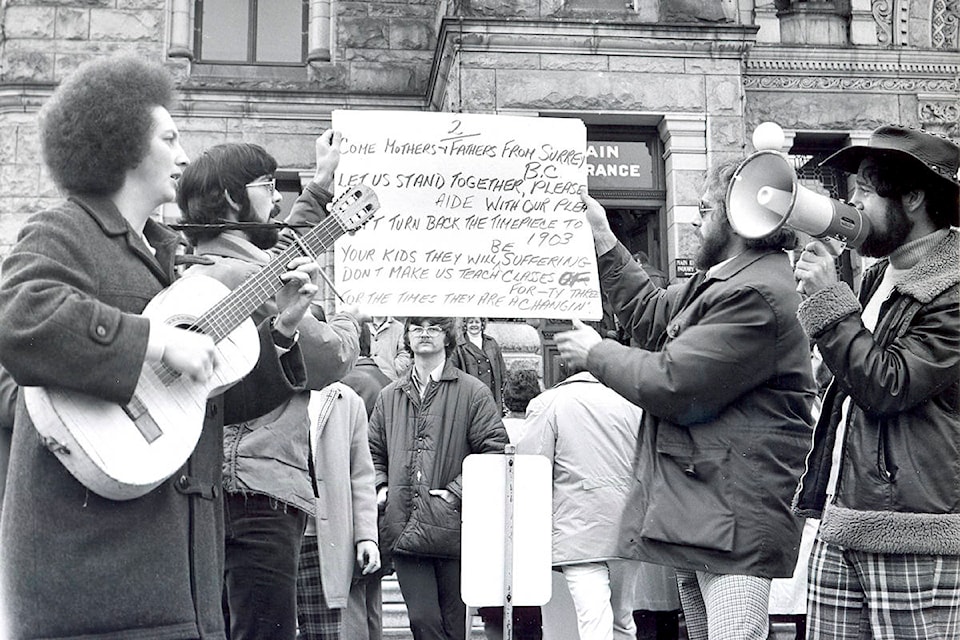Back in 1974, Valentine’s was a landmark day for Surrey teachers and others in B.C.
It was no love-in on Feb. 14 nearly five decades ago, when close to 1,000 unionized Surrey teachers crowded into the auditorium at Queen Elizabeth Secondary to discuss what they considered to be severe funding shortages in the rapidly-growing school district.
“Outrage was so high that teachers voted almost unanimously to walk off the job the very next day and take their protest to Victoria,” says a plaque commemorating the labour action.
“Led by their local president, Lloyd Edwards, they rafflied on the lawns of the B.C. Legislature calling for increased funding for public education,” explains the plaque, which is located outside the Surrey Teachers Association office, 9030 King George Blvd.
“The results of their couragous protest were dramatic. The BC Teachers’ Federation and government reached an agreement that, over three years, resulted in 4,000 new teaching positions and reduced class sizes across B.C. This was an important step towards full collective bargaining rights for all B.C. teachers.”
The story is also told on the website of BC Labour Heritage Centre (labourheritagecentre.ca), and also in an eight-minute video posted to the organganization’s YouTube channel.
The results of the Surrey teachers’ strike of 1974 were profound, at a time when with an education-friendly NDP government was in Victoria, and after years of BCTF campaigns to achieve class-size reductions.
It’s deemed “the most significant demonstration of political action to that point in the BCTF’s history.
“At this time the legislative framework for teacher bargaining included only salaries and bonuses with compulsory arbitration as the only resolution mechanism. Hence bargaining was not a vehicle to achieve working and learning conditions improvements,” explains a webpost.
“The results of the walkout, confronting a government that had promised action on class size, were dramatic.”
In 2017 the BC Teachers’ Federation (BCTF) celebrated 100 years since its founding meeting, and the history of the organization is chronicled on labourheritagecentre.ca/bctf.
BC Labour Heritage Centre Society was founded in 2004 with JJ (Jack) Munro as chair. The organization works to preserve, document and present the history of working people in British Columbia.
The society’s projects include one about South Asian Labour History, an Asbestos Memorial, walking tours, plaques, Labour History lesson plans for schools, and more.
#TDIH: The emotional highlight of the summer of #Solidarity protests came on August 10th, 1983. A rally took place at Empire Stadium in #Vancouver; over 40,000 citizens united in community, strength, rage and determination against the Social Credit govt. https://t.co/Hd2vPG67fv
— BC Labour Heritage (@BC_LHC) August 10, 2021
Another landmark year in B.C. labour history was 1983, when the province experienced the largest political protest in its history.
“Resistance to repressive legislation and a slashed provincial budget lasted several months, in the form of massive demonstrations, rallies, petitions and an escalating strike plan,” says a post on the BC Labour Heritage Centre Society website.
Nearly four decades later, an online exhibit about B.C.’s “Solidarity” movement explores “the diverse experiences and recollections of workers and activists involved in this historic moment, and pays tribute to the power of solidarity between communities,” with archival photos, videos, objects and oral-history interviews, in 17 chapters.
tom.zillich@surreynowleader.com
Like us on Facebook Follow us on Instagram and follow Tom on Twitter
